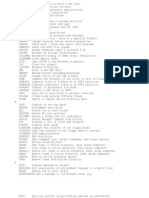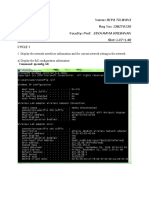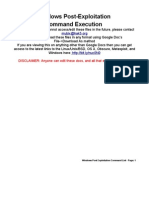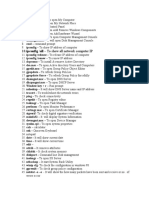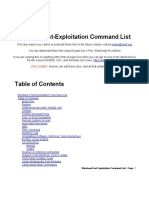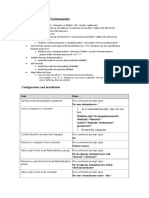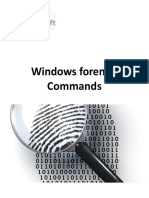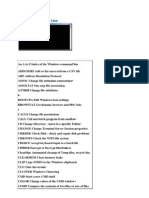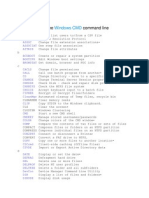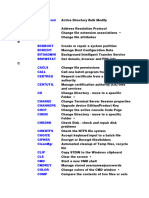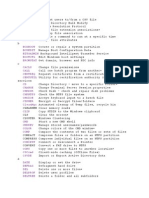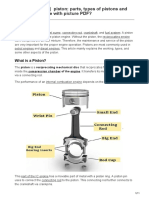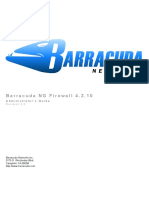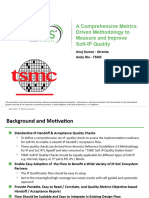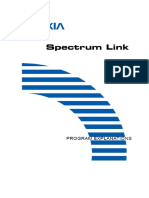0% found this document useful (0 votes)
190 views7 pagesWindows Forensic Commands - Draft
The document provides a comprehensive list of Windows forensic commands categorized into various sections such as Network Discovery, Network Scan, Firewall, Users, Services, Registry, Shadow Files, System Info, and Miscellaneous. Each section includes specific commands for tasks like displaying network devices, managing users, configuring firewall rules, and retrieving system information. These commands are essential for conducting forensic analysis and managing Windows systems effectively.
Uploaded by
scribd1975scribdCopyright
© © All Rights Reserved
We take content rights seriously. If you suspect this is your content, claim it here.
Available Formats
Download as DOCX, PDF, TXT or read online on Scribd
0% found this document useful (0 votes)
190 views7 pagesWindows Forensic Commands - Draft
The document provides a comprehensive list of Windows forensic commands categorized into various sections such as Network Discovery, Network Scan, Firewall, Users, Services, Registry, Shadow Files, System Info, and Miscellaneous. Each section includes specific commands for tasks like displaying network devices, managing users, configuring firewall rules, and retrieving system information. These commands are essential for conducting forensic analysis and managing Windows systems effectively.
Uploaded by
scribd1975scribdCopyright
© © All Rights Reserved
We take content rights seriously. If you suspect this is your content, claim it here.
Available Formats
Download as DOCX, PDF, TXT or read online on Scribd
/ 7



